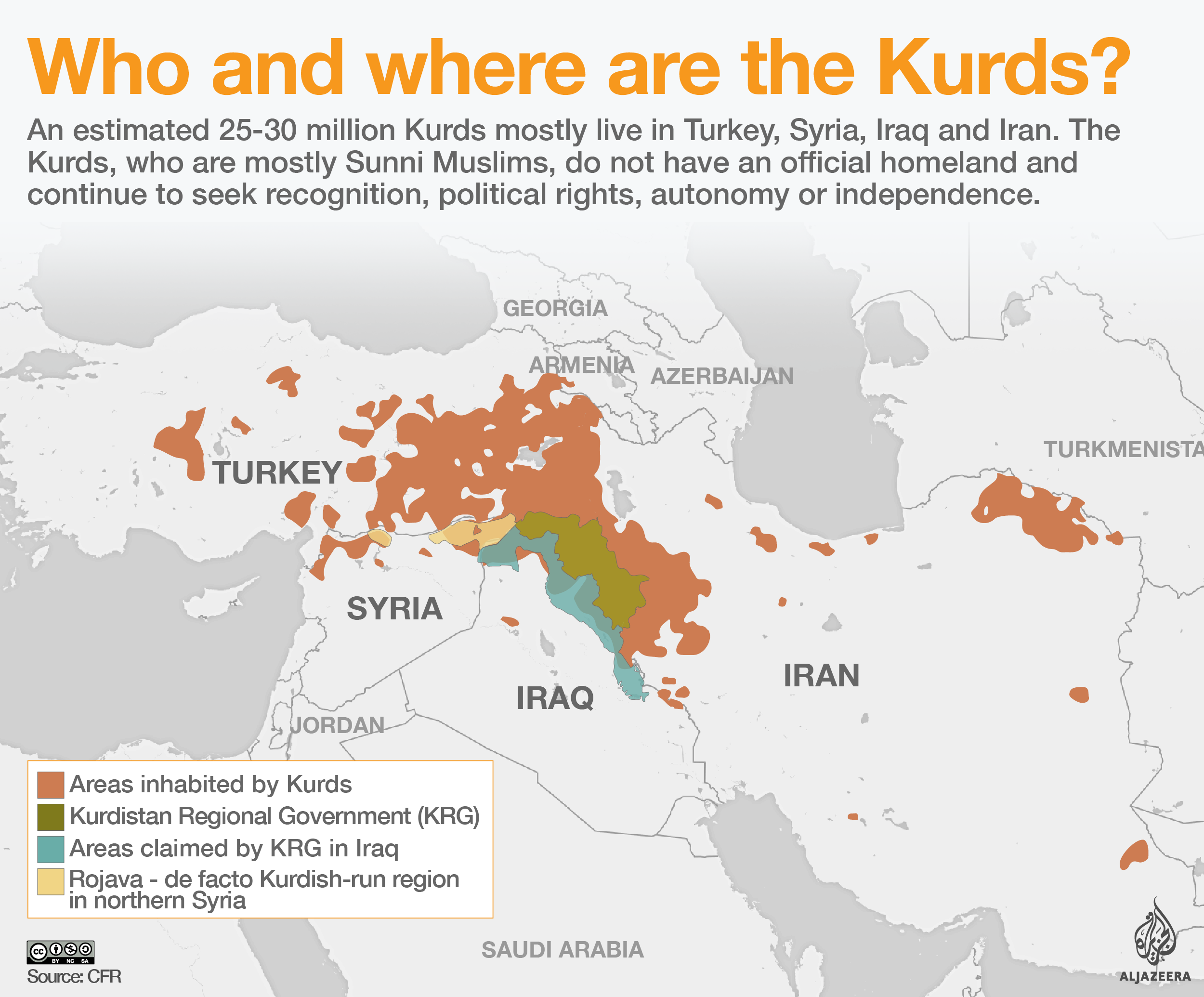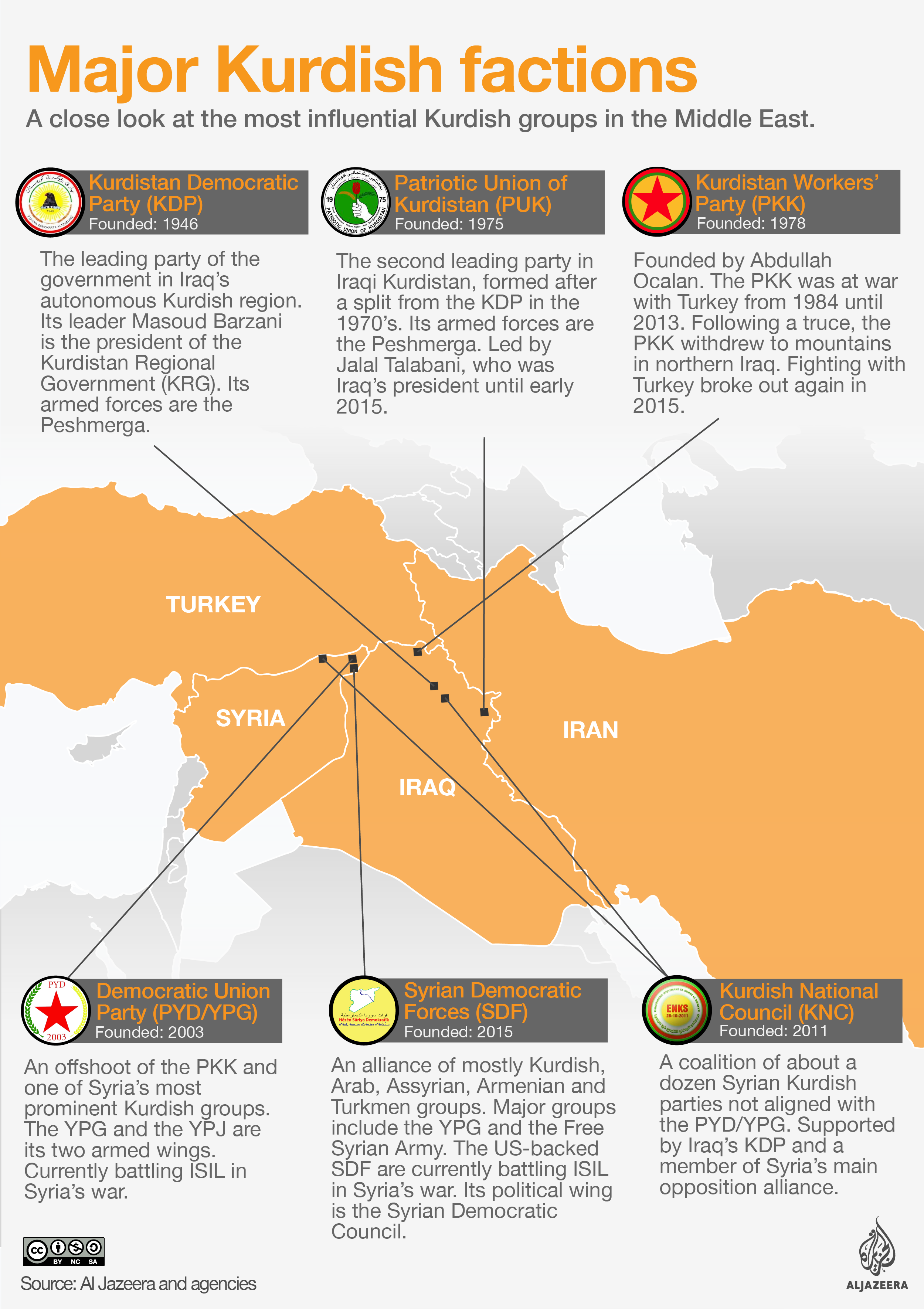Who and where are the Kurds?
One of the world’s largest stateless people that reside primarily in mountainous regions of Iran, Iraq, Syria and Turkey

Up to 30 million Kurds, who are mostly Sunni Muslims, do not have an official country or homeland.
After the collapse of the Ottoman Empire nearly a century ago, Kurds dispersed into mostly four nations (Turkey, Iraq, Syria and Iran). They have pursued autonomy or independence.
Keep reading
list of 4 itemsEid Mubarak: Hear greetings in different languages
When is Eid al-Fitr 2024 and how is it celebrated?
Israel’s war on Gaza – six relentless months of death and destruction
In each of the four nations, Kurds have had years of unstable relationships with governments.
In 1992, the Kurdistan Regional Government (KRG) was formed by the Kurdistan National Assembly, the first democratically elected parliament in Kurdistan (and in Iraq).
Opinion: Iraq’s regional decentralisation debate is heating up
The KRG, which is a secular government, is modeled along the lines of a modern independent nation-state in a federation with the rest of Iraq.
Today at least 5.2 million people live in Iraqi Kurdistan, according to the KRG.
READ MORE: Sulaimania: Saving the dream city of a Kurdish prince
The government has its own parliament, military (the Peshmerga), borders and foreign policy.
According to the CIA factbook, Kurds make up about 10 percent of the population in Syria, 19 percent of the population of Turkey, 15-20 percent of the population of Iraq, and nearly 10 percent of Iran.
The infographic below shows where the Kurds live and who the major Kurdish factions are in the region.

